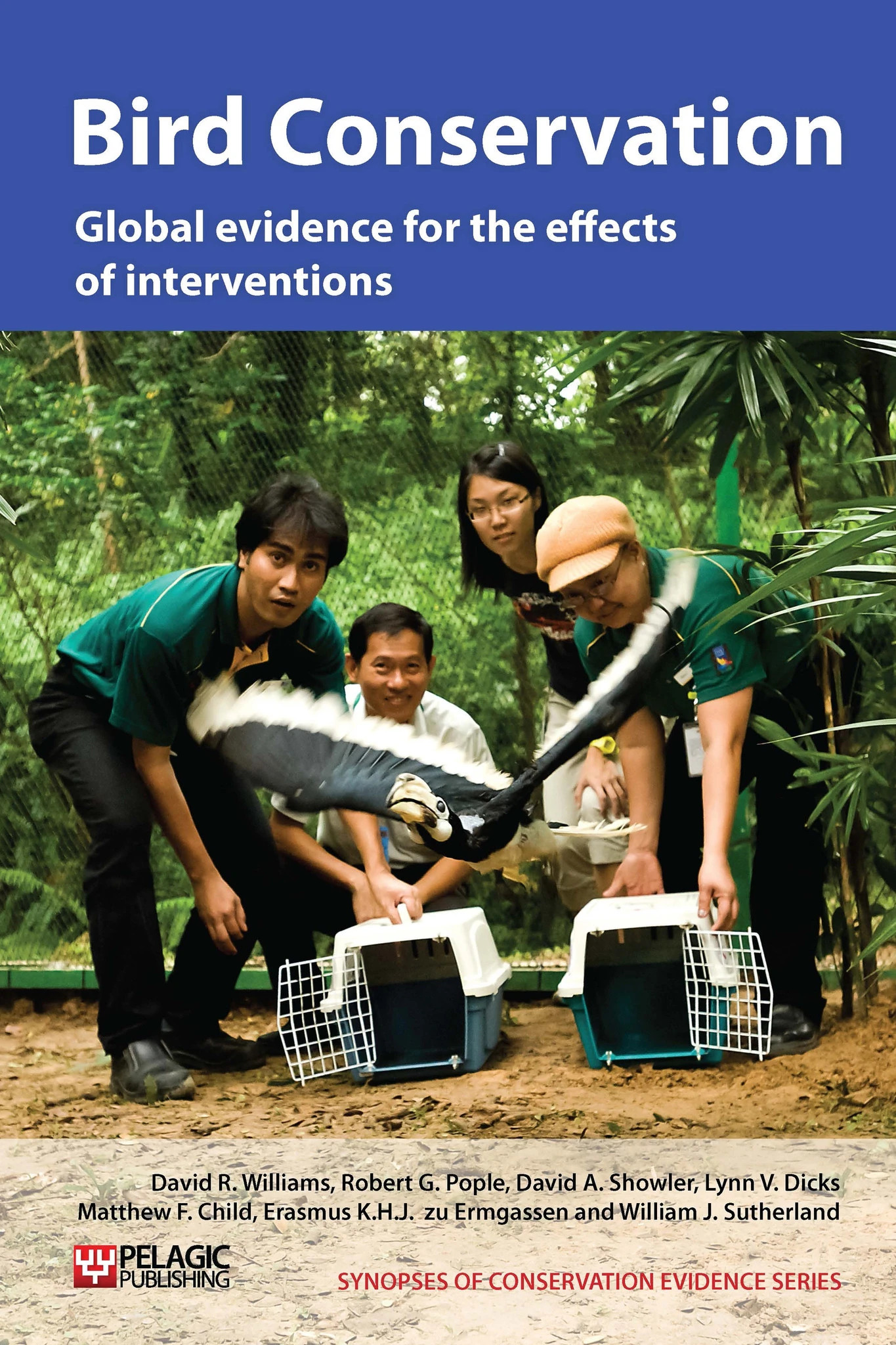Actions to conserve biodiversity
We have summarised evidence from the scientific literature about the effects of actions to conserve wildlife and ecosystems.
Review the evidence from the studies
Not sure what Actions are? Read a brief description.
Search for evidence
e.g. "frogs chytrid"
454 Actions found
Refine
Hide
454 Actions found
Download Actions
| 0 selected |
|
Order results by:
| Action | Effectiveness | Studies | Category | |
|---|---|---|---|---|
|
Restore or create kelp forests Action Link |
Unknown effectiveness (limited evidence) | 1 |
|
|
|
Restore or create lagoons Action Link |
Unknown effectiveness (limited evidence) | 1 |
|
|
|
Revegetate gravel pits Action Link |
No evidence found (no assessment) | 0 |
|
|
|
Remove or control predators to enhance bird populations and communities Action Link |
Beneficial | 2 |
|
|
|
Control avian predators on islands Action Link |
Likely to be beneficial | 10 |
|
|
|
Control mammalian predators on islands Action Link |
Beneficial | 2 |
|
|
|
Control mammalian predators on islands for wildfowl Action Link |
Awaiting assessment | 1 |
|
|
|
Control mammalian predators on islands for seabirds Action Link |
Beneficial | 18 |
|
|
|
Control mammalian predators on islands for gamebirds Action Link |
Awaiting assessment | 1 |
|
|
|
Control mammalian predators on islands for rails Action Link |
Awaiting assessment | 2 |
|
|
|
Control mammalian predators on islands for waders Action Link |
Awaiting assessment | 2 |
|
|
|
Control mammalian predators on islands for raptors Action Link |
Awaiting assessment | 1 |
|
|
|
Control mammalian predators on islands for pigeons Action Link |
Awaiting assessment | 2 |
|
|
|
Control mammalian predators on islands for parrots Action Link |
Awaiting assessment | 2 |
|
|
|
Control mammalian predators on islands for songbirds Action Link |
Awaiting assessment | 5 |
|
|
|
Control invasive ants on islands Action Link |
Unknown effectiveness (limited evidence) | 1 |
|
|
|
Control predators not on islands Action Link |
Evidence not assessed | 1 |
|
|
|
Control predators not on islands for seabirds Action Link |
Awaiting assessment | 2 |
|
|
|
Control predators not on islands for wildfowl Action Link |
Awaiting assessment | 8 |
|
|
|
Control predators not on islands for gamebirds Action Link |
Awaiting assessment | 5 |
|
|
|
Control predators not on islands for rails Action Link |
Awaiting assessment | 1 |
|
|
|
Control predators not on islands for cranes Action Link |
Awaiting assessment | 1 |
|
|
|
Control predators not on islands for waders Action Link |
Awaiting assessment | 4 |
|
|
|
Control predators not on islands for parrots Action Link |
Awaiting assessment | 1 |
|
|
|
Control predators not on islands for songbirds Action Link |
Awaiting assessment | 10 |
|
Download Actions
| 0 selected |
|

Bird Conservation - Published 2013
Bird Synopsis
Watch this search
If you are familiar with RSS feeds, please click the button below to retrieve the feed URL:
RSS feed for this searchIf you are unfamiliar with RSS feeds, we would suggest reading this BBC article.
Unfortunately, due to the number of feeds we have available, we cannot provide e-mail updates. However, you could use tools such as Feed My Inbox to do this for you.
What are 'Individual studies' and 'Actions'?
Individual studies
An individual study is a summary of a specific scientific study, usually taken from a scientific journal, but also from other resources such as reports. It tells you the background context, the action(s) taken and their consequences.
If you want more detail please look at the original reference.
Actions
Each action page focuses on a particular action you could take to benefit wildlife or ecosystems.
It contains brief (150-200 word) descriptions of relevant studies (context, action(s) taken and their consequences) and one or more key messages.
Key messages show the extent and main conclusions of the available evidence. Using links within key messages, you can look at the paragraphs describing each study to get more detail. Each paragraph allows you to assess the quality of the evidence and how relevant it is to your situation.
Where we found no evidence, we have been unable to assess whether or not an intervention is effective or has any harmful impacts.





)_2023.JPG)














